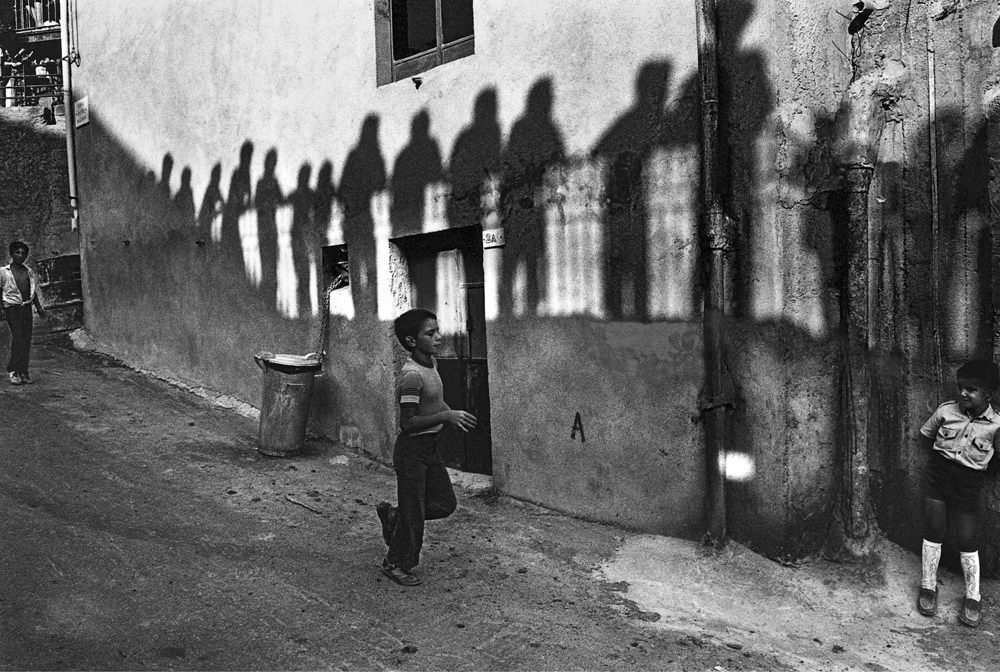Capizzi 1982

Photo of Gabriele Basilico
Photo Reading
1) Detailed Image Analysis:
The photo depicts a street scene in grayscale. It captures three children, each engaged in separate activities, with a series of imposing shadows cast against the wall, likely from unseen figures standing out of the frame. The wall, marked with the letter ‘A’, shows signs of wear and decay, adding to the texture of the scene. The street is devoid of color, bringing a rawness to the image.
2) Interpretation of the Message:
The photograph might be commenting on childhood in an urban environment, where the large shadows could symbolize the presence or influence of adults or the societal structures looming over the innocence of the children. There’s a possible narrative of the overlooked moments of play and simplicity amidst a more complex or harsher reality.
3) Technical Choices:
– 3a) Light: The light appears to be harsh, possibly midday sun, casting long, distinct shadows on the wall. This creates a contrast between the light and dark areas, emphasizing the division of space.
– 3b) Image Planes: The image has a clear foreground with the child and the trash bin, a middle ground featuring the child in motion, and a background with another child leaning against the wall. These planes provide depth and a sense of scale.
– 3c) Tones: The grayscale tones highlight the interplay of light and shadow, giving the photo a gritty, timeless feel. The absence of color focuses attention on the action and the children’s expressions.
– 3d) Framing: The framing captures a broad street view, allowing the shadows to stretch across the wall, leading the viewer’s eye through the photo from left to right.
– 3e) Point of View: The photo is taken from an observer’s perspective at a level that is slightly above the children, which places the viewer as an onlooker to the scene.
– 3f) Subjects: The primary subjects are the children and their activities, with the secondary subjects being the shadows and the textured wall, both of which contribute to the context of the scene.
– 3g) Compositional Structure: The composition balances the subjects within the frame, with the children spaced out and the shadows providing a backdrop that ties the elements together.
– 3h) Dynamism: There is a mix of dynamism and stillness; the child in motion provides a sense of liveliness, while the stationary children add a contemplative or static element to the scene. The shadows offer a sense of the unseen movement outside the frame.
